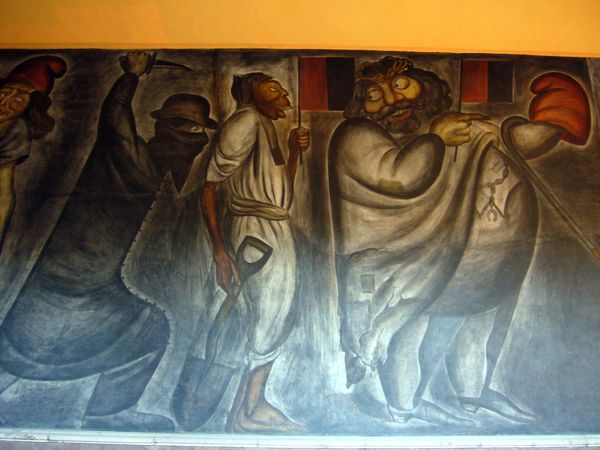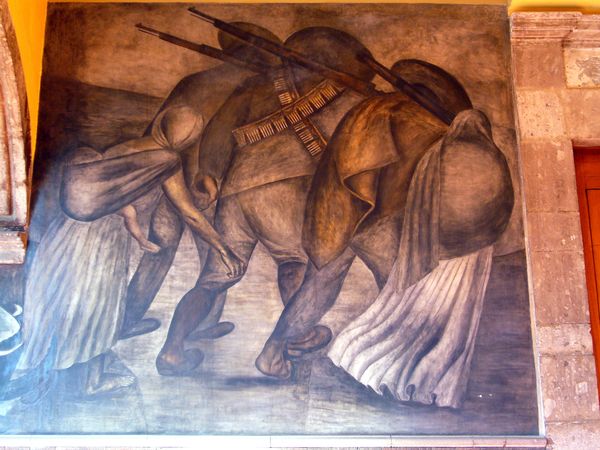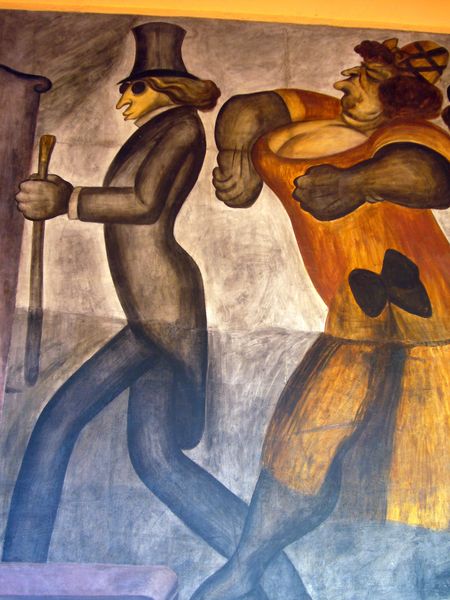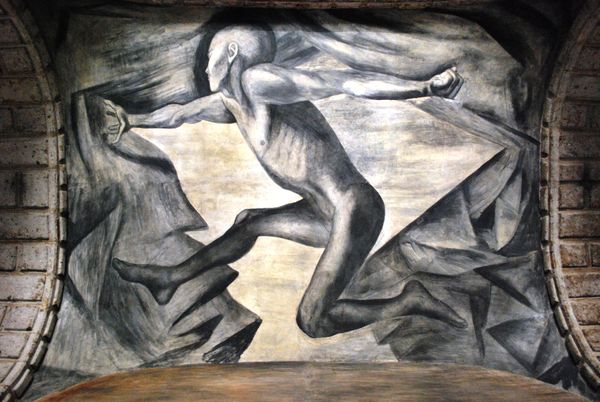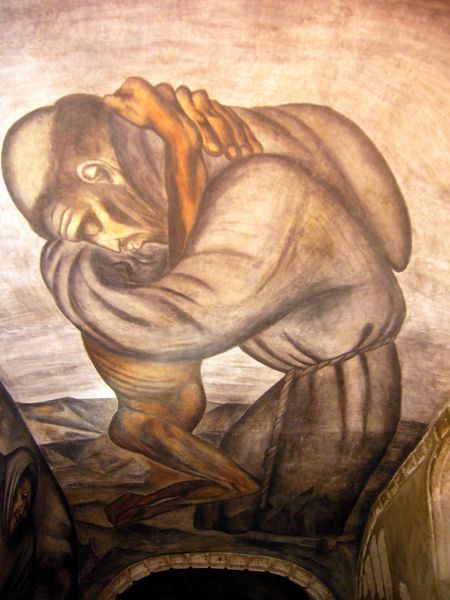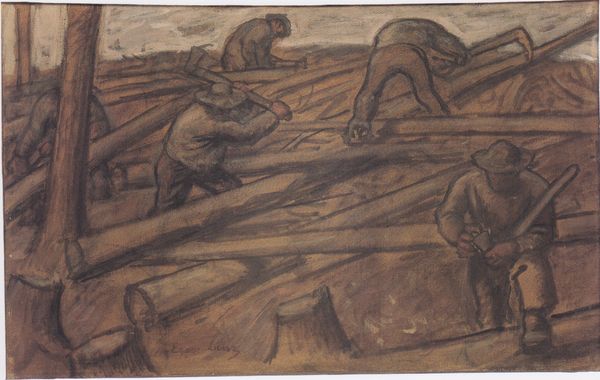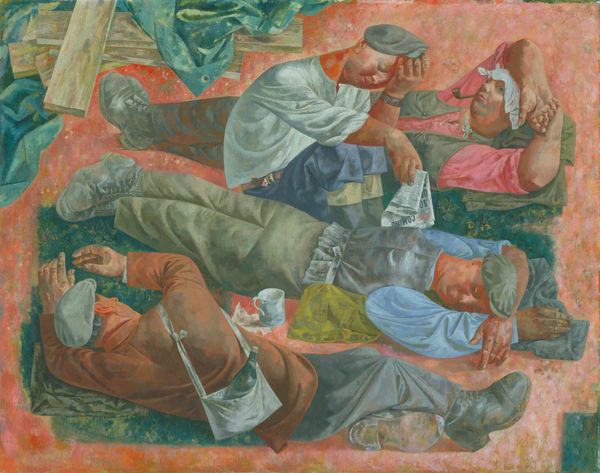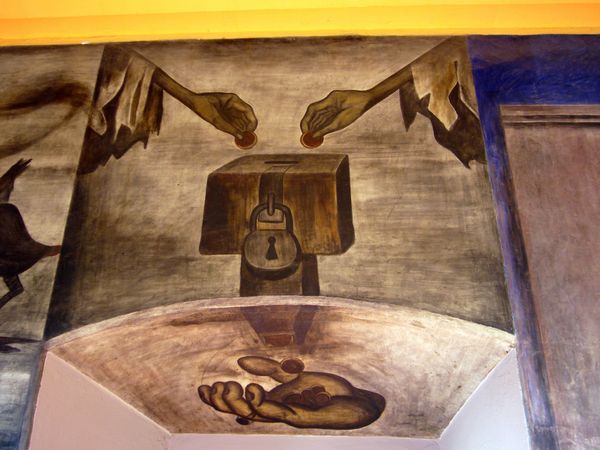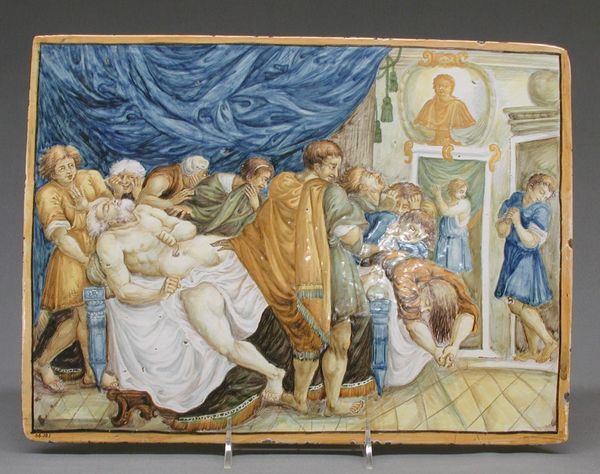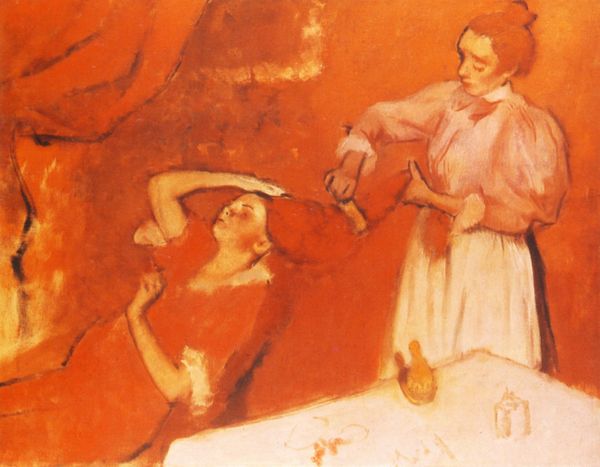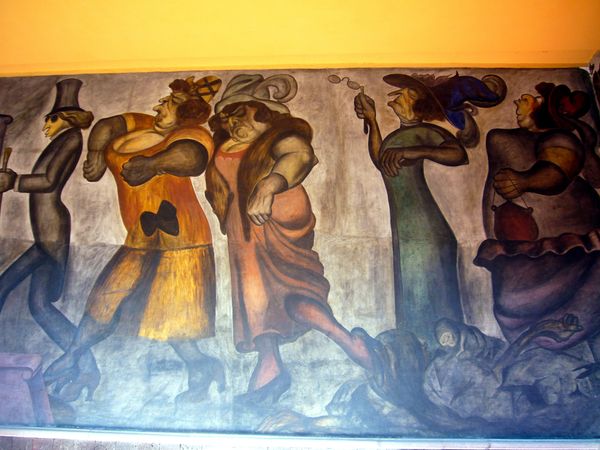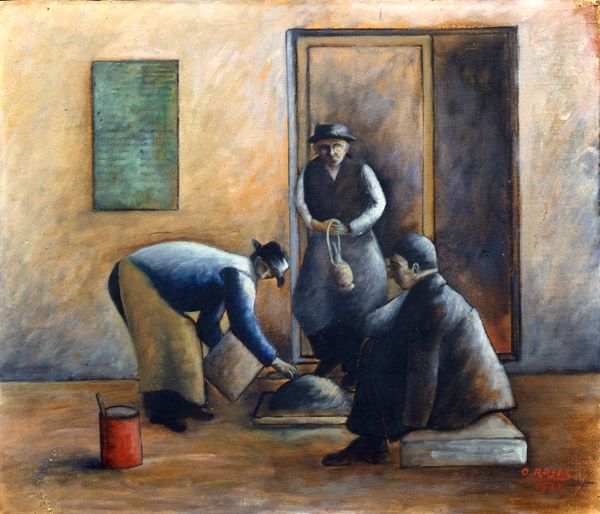
tempera, mural
#
narrative-art
#
tempera
#
figuration
#
mexican-muralism
#
history-painting
#
mural
Copyright: Public domain
Editor: Here we have José Clemente Orozco's "Farewell," painted in 1926 using tempera on a mural. It feels really heavy and somber, a bit like a scene of resignation. What's your read on this work? Curator: Orozco, along with Rivera and Siqueiros, spearheaded Mexican Muralism in the wake of the Revolution. Given that context, what does "farewell" evoke for you? Is it simply a personal goodbye, or something larger? Editor: I see the knives, the bleak colors... Perhaps a tragic end for a revolutionary ideal? A mother sending her sons to fight in a war they can't win? Curator: Precisely. Consider the role of women in revolutionary narratives – often depicted as both nurturers and mourners. How does Orozco subvert or reinforce that stereotype here? The almost mechanical stance of the men hints at the impersonal nature of sacrifice in such conflicts. And, note the austere geometry in the background. Does this feel celebratory or oppressive? Editor: Not celebratory at all! It’s more like a concrete wall, almost a sense of confinement. The mural really questions the supposed heroism of war, showing the loss and rigidity it enforces. Curator: Exactly. Orozco uses the mural format itself—traditionally meant to inspire public unity—to question the Revolution's promises and to depict the social cost of violence, especially on the family. It serves as a counter-narrative, unsettling comfortable national myths. Editor: That’s a perspective I hadn't considered. It is far from the triumphant depictions you often see; it critiques the violence and its impact on personal relationships, challenging the dominant narrative. I will never look at murals the same. Curator: That's the power of engaging with art through a critical lens, isn't it?
Comments
No comments
Be the first to comment and join the conversation on the ultimate creative platform.
